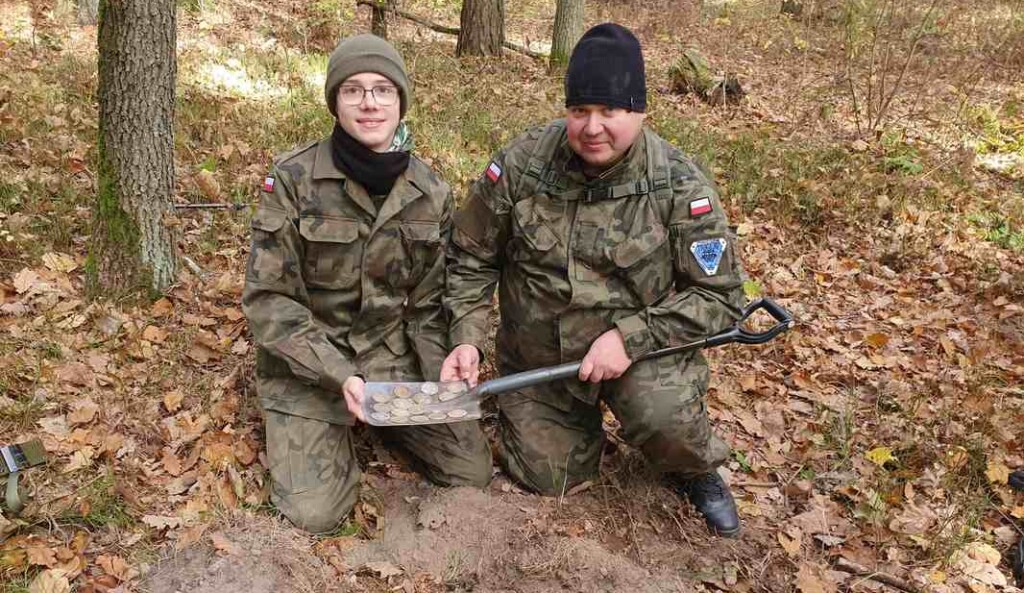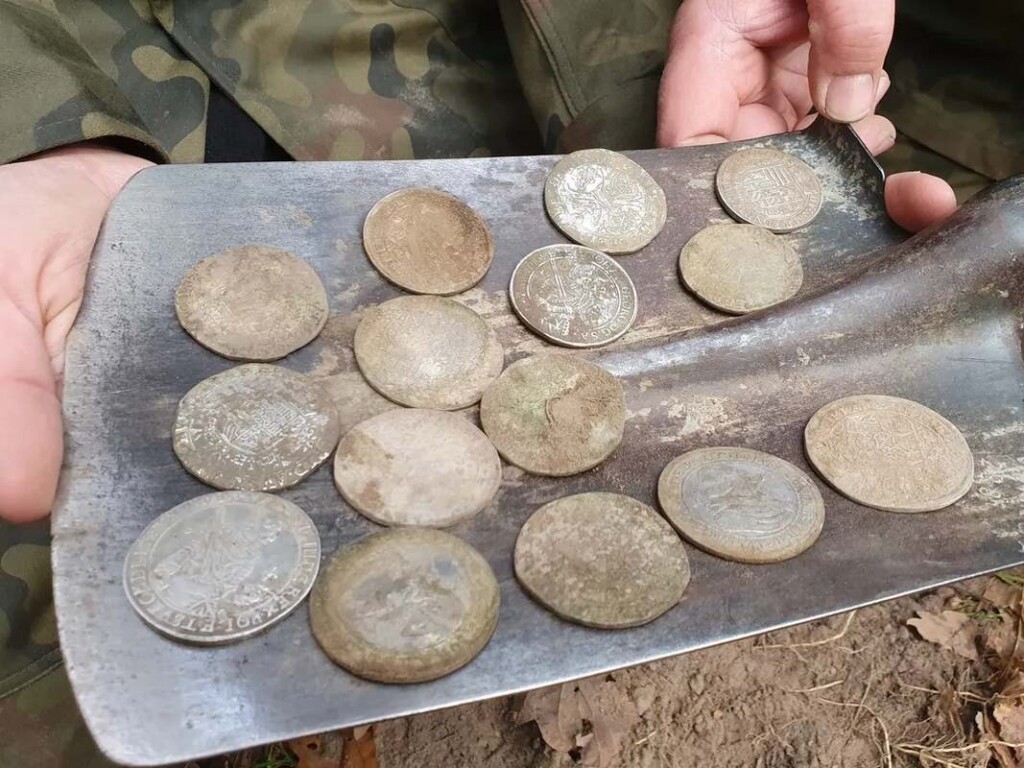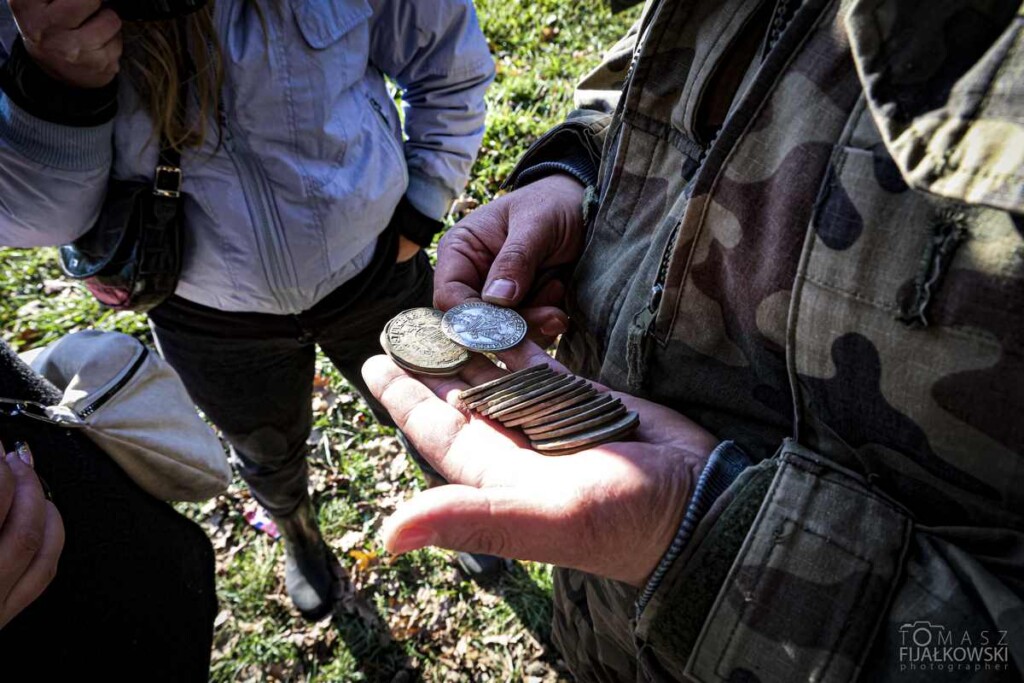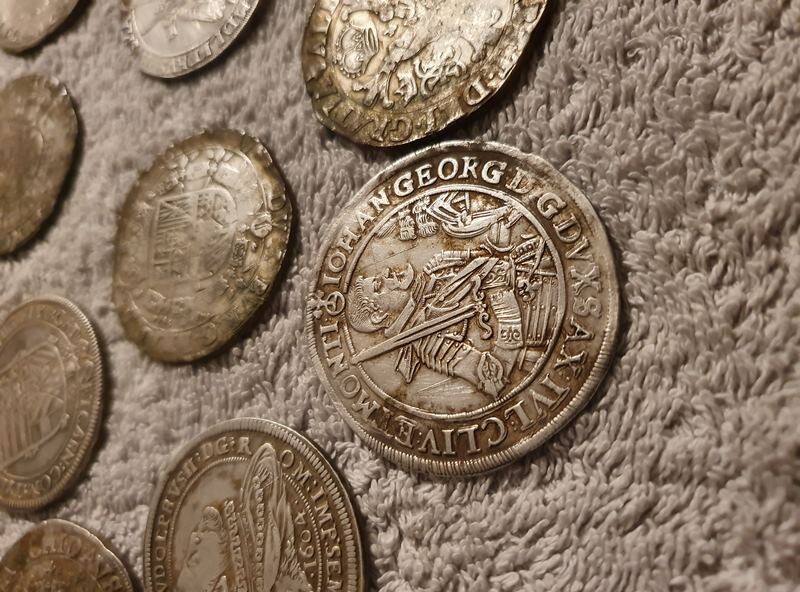 Sławomir Milewski and his son Szymon – credit, Polish “Husaria” Treasure Hunters Association, supplied.
Sławomir Milewski and his son Szymon – credit, Polish “Husaria” Treasure Hunters Association, supplied.In the Polish forests north of Warsaw, a father and son were out with a local historical society when they found 17 pre-modern coins which may be worth around $120,000.
They were supposed to be looking for the remains of a Roman road, but the metal detectors found the coins instead.
 – credit, Polish “Husaria” Treasure Hunters Association, supplied.
– credit, Polish “Husaria” Treasure Hunters Association, supplied.The treasure was discovered by Sławomir Milewski together with his son Szymon Milewski and contains 17 silver coins: 9 thalers and 8 patagons. The oldest coin dates from 1587 – 1564 CE, and the youngest is 1641.
Members of the Triglav Historical and Research Association and the Polish “Husaria” Treasure Hunters Association gathered around the boy and his father to marvel at the treasure, especially because they never ended up finding the road.
Minted several different political entities, they give a lovely cross-sectional insight into the monetary customs and details of northern Europe.
Thalers were silver coins used throughout Europe for centuries, and the word “dollar” is derived from them. Several of the thalers found were minted in Austria by Rudolf II in 1604; Frederick I, perhaps 20 years later; and Leopold V in 1620.
Two were minted by the Saxony ruler Johann Georg I in 1612 and 1624, another from Zweibrücken in a German proto-state called the Palatinate, and one was minted in the kingdom of South Tyrol of northern Italy-southern Austria.
ALSO CHECK OUT: Largest Anglo-Saxon Gold Coin Hoard Discovered in English Field
Only one was minted by the Polish king Sigismund III, and the patagons were all minted in the Spanish Netherlands. These identifications were provided by the “Husaria” Treasure Hunters Association, who admit they are not experts in numismatics, but all in all the hoard is a snapshot of the inter-commercial activity of Poland in the early 17th century.
 © Tomaz Fijalkowski, supplied to GNN.
© Tomaz Fijalkowski, supplied to GNN. – courtesy of Mateusz Sygacz.
– courtesy of Mateusz Sygacz.The coin minted in Zweibrücken may be of particular interest for historical collections, as per a Facebook post from “Husaria” these thalers were minted with different patterns every year, making identification of them virtually hopeless.
As Sonja Anderson of Smithsonian Magazine notes, many of the minting dates match up to the period of the Thirty Years’ War when the monarchs stamped onto the coins were engaged in one of the most brutal conflicts in European history.
HOARD STORIES: Hoard of 1,000-yo Coins Unearthed in Farmer’s Field Nets Millions for Metal Detecting Friends–and Treasure for UK
Such years of instability dissuade people from carrying around large sums of money, and buried treasure, from Turkey to Kentucky, often date to such periods.
“Another assumption is that the burial was made by a merchant who wanted to hide his property from potential robbers—there was an inn about a kilometer away [during] the 16th century, and we know from earlier discoveries of similar deposits that it was a common practice to hide valuables before visiting an inn,” Mateusz Sygacz of the “Husaria” Treasure Hunters Association told All That’s Interesting.
SHARE This Wonderful Discovery With Your Friends…
Source link

